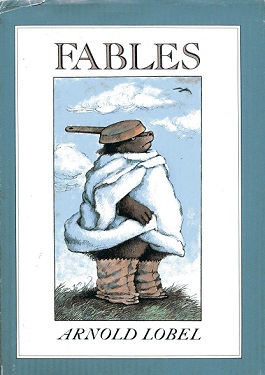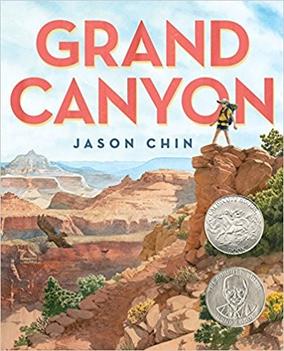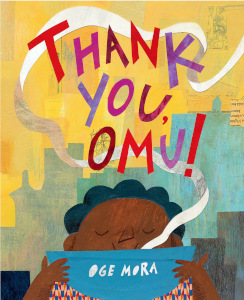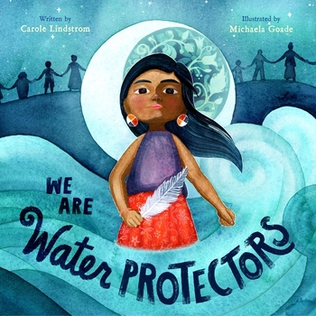
Ed Tse-chun Young was a Chinese-born American illustrator and writer of children's picture books and tai chi instructor. He has received many awards and recognitions, including the Caldecott Medal and Lifetime Achievement awards for his contributions as a children's illustrator.

Fables is a children's picture book written and illustrated by American author Arnold Lobel. Released by Harper & Row in 1980, it was the recipient of the Caldecott Medal for illustration in 1981.

The Lion & the Mouse is a 2009 nearly wordless picture book illustrated by Jerry Pinkney. This book, published by Little, Brown and Company, tells Aesop's fable of The Lion and the Mouse. In the story, a mouse's life is a spared by a lion. Later, after the lion is trapped, the mouse is able to set the lion free. Adapting the fable, with the moral that the weak can help the strong, as a wordless picture book was seen as a successful way of overcoming the brief plot generally found in the source stories. While it was Pinkney's first wordless picture book, it was not the first time he had told the story, having previously included it in his Aesop's Fables, published in 2000. Pinkney, who had received five Caldecott Honors, became the first African American to win the Caldecott Medal for his illustrations in this book. His illustrations were generally praised for their realism and sense of place. The cover illustrations, featuring the title characters but no text, drew particular praise.

The Tortoise & the Hare is a 2013 wordless picture book of Aesop's classic fable and is illustrated by Jerry Pinkney. It is about a tortoise and a hare that compete in a foot race with the tortoise surprisingly winning.

Radiant Child: The Story of Young Artist Jean-Michel Basquiat is a 2016 picture book biography by Javaka Steptoe about Jean-Michel Basquiat. Using a style similar to Basquiat's, the book tells the story of his childhood and early career. It won the 2017 Caldecott Medal and Coretta Scott King Illustrator Award for its illustrations.

Wolf in the Snow is a 2017 wordless picture book by Matthew Cordell. The book was favorably received by critics and won the 2018 Caldecott Medal. The story has drawn comparisons to fairy tales like Little Red Riding Hood. The nearly wordless book tells the story of a girl and wolf who each get lost in the snowstorm. Cordell used distinctive illustration techniques for the girl and the wolf.

Big Cat, Little Cat is a 2017 children's picture book written by Elisha Cooper. It was published by Roaring Brook Press, a subsidiary of Macmillan Books. In the story, a large, white cat welcomes a new black cat into a family. The white cat then dies, and the cycle begins anew when the family adopts a new kitten. Cooper was inspired to write the story after his family experienced a similar situation. Critics praised his illustrations, for their ability to help further the story's messages and themes. These monochromatic illustrations were different than the style Cooper normally employed when illustrating a book. The book was well-reviewed, and received a 2018 Caldecott Honor.

Crown: An Ode to the Fresh Cut is a 2017 picture book by Derrick Barnes, illustrated by Gordon C. James. The book, Barnes' first picture book, is a poem describing a boy's feelings and experience while getting a haircut. James, who was not the first choice to be the illustrator, wanted the oil color illustrations to have the feel of fine art.

Grand Canyon by Jason Chin is a 2017 children's picture book. The book tells about the plants, animals and habitats of the Grand Canyon, both now and in the past, using the premise of a hiking trip there. The inspiration for the book was a trip in high school; Chin had originally conceived of a Grand Canyon origin story. The book marked the first time Chin used die cuts, in addition to his normal use of pen and ink, watercolors, and gouache. The book was awarded a 2018 Caldecott Honor for its illustrations and a 2018 Sibert Honor for its informative text. Grand Canyon is one of only a few non-fiction books that are not biographies to be recognized by the Caldecott.

Hello Lighthouse is a picture book written and illustrated by Sophie Blackall. The book tells the story of a lighthouse and its last keeper and was well received, winning the 2019 Caldecott Medal for its illustrations. Drawing inspiration from a variety of sources, Blackall worked hard on the design of the book. The writing and illustrations were meant to complement each other noting the change and consistency of the sea.

The Rough Patch is a 2018 picture book by Brian Lies. An idea of Lies' for more than ten years, when it was published it was well received and was named a 2019 Caldecott Honor book. The story tells of a fox named Evan whose dog dies. Evan then experiences various emotions while grieving before adopting a new dog at the end of the book. The book was praised for Lies' mixed media illustrations, in particular the way he used light and shadow.

Thank You, Omu! is a 2018 picture book written and illustrated by Oge Mora. The story is about Omu, who cooks a stew and shares it with her neighbors; they show their gratitude by bringing her food. The book started as an assignment for a class of Mora's at the Rhode Island School of Design, where it was seen by an editor from Little, Brown. Thank You, Omu was well reviewed and a recipient of the 2019 Caldecott Honor for its illustrations. The book's mixed media drew praise for their detailed depictions of characters and locations.

A Big Mooncake for Little Star is a 2018 picture book written and illustrated by Grace Lin. The story is about Little Star gradually eating the mooncake that her mother has baked. The book was a departure for Lin both thematically and in her use of illustrative style. The book was well reviewed and was awarded a Caldecott Honor in 2019. The illustrations feature heavy use of black and rely on both the pictures and words to convey the story and its themes.

Alma and How She Got Her Name is a 2018 children's picture book by Juana Martinez-Neal. Alma, whose full name is Alma Sofia Esperanza José Pura Candela, thinks she has too many names and so she asks her dad about them. He explains the various people she was named to honor. The book was spurred by Martinez-Neal's Peruvian immigrant experience and the birth of her children. The book was well reviewed and received a 2019 Caldecott Honor for its illustrations. The graphite and colored pencil illustrations feature only a few colors, including blue and pink. Martinez-Neal hoped to evoke the feel of a photo album, in keeping with the book's theme of family.

Freedom in Congo Square is a 2016 poetic nonfiction picture book by Carole Boston Weatherford, and illustrated by R. Gregory Christie. It was published in hardcover by Little Bee Books. The book provides an account of 19th-century slaves in New Orleans who were able to gather in one place on Sundays: Congo Square. In addition to the book's main text, "an introduction and afterword provide further historic detail."

Bear Came Along is a 2019 picture book by Richard T. Morris and illustrated by LeUyen Pham. It tells the story of a group of animals on a river adventure. Published on June 1, 2019, Bear Came Along was based on memories Morris had of going to overnight camp for the first time. The watercolors, ink, and gouache illustrations Pham created were special for her. Critics wrote about her ability to juggle several different tones through the pictures. These illustrations were also generally seen as complementing the book's theme of being connected to others. The book was generally well reviewed and received a 2020 Caldecott Honor.

We Are Water Protectors is a 2020 picture book written by Carole Lindstrom and illustrated by Michaela Goade. Written in response to the Dakota Access Pipeline protests, the book tells the story of an Ojibwe girl who fights against an oil pipeline in an effort to protect the water supply of her people. It was published by Roaring Brook Press on March 17, 2020. The book was well received. Critics praised its message of environmental justice, its depiction of diversity, and the watercolor illustrations, for which Goade won the 2021 Caldecott Medal, becoming the first Indigenous recipient of the award. The book also received the 2021 Jane Addams Children's Book Award winner in the Books for Younger Children category.

The Paperboy is a 1996 children's picture book by American author and illustrator Dav Pilkey. Inspired by Pilkey's own experiences as a paperboy, it tells the story of a paperboy and his dog as they deliver newspapers in the early hours of the morning. The Paperboy received positive reviews from critics and was awarded a 1997 Caldecott Honor for its illustrations.

Going Down Home with Daddy is a 2019 picture book written by Kelly Starling Lyons and illustrated by Daniel Minter. It tells the story of a young boy who attends a large family reunion at his great-grandmother's house and struggles to prepare a contribution to the family celebration. Inspired by Lyons's visit to a family gathering in rural Georgia, the book was published by Peachtree Publishing on April 1, 2019. The acrylic illustrations incorporate Adinkra symbols representing various concepts in Ghanaian culture. Critics praised the book's themes of family culture and heritage as well as Minter's illustrations, for which it received a Caldecott Honor in 2020. It also received the 2019 Lupine Award in the Picture Book category.

Voice of Freedom: Fannie Lou Hamer, The Spirit of the Civil Rights Movement is a 2015 non-fiction and poetic children's book by written by Carole Boston Weatherford and illustrated by Ekua Holmes.




















